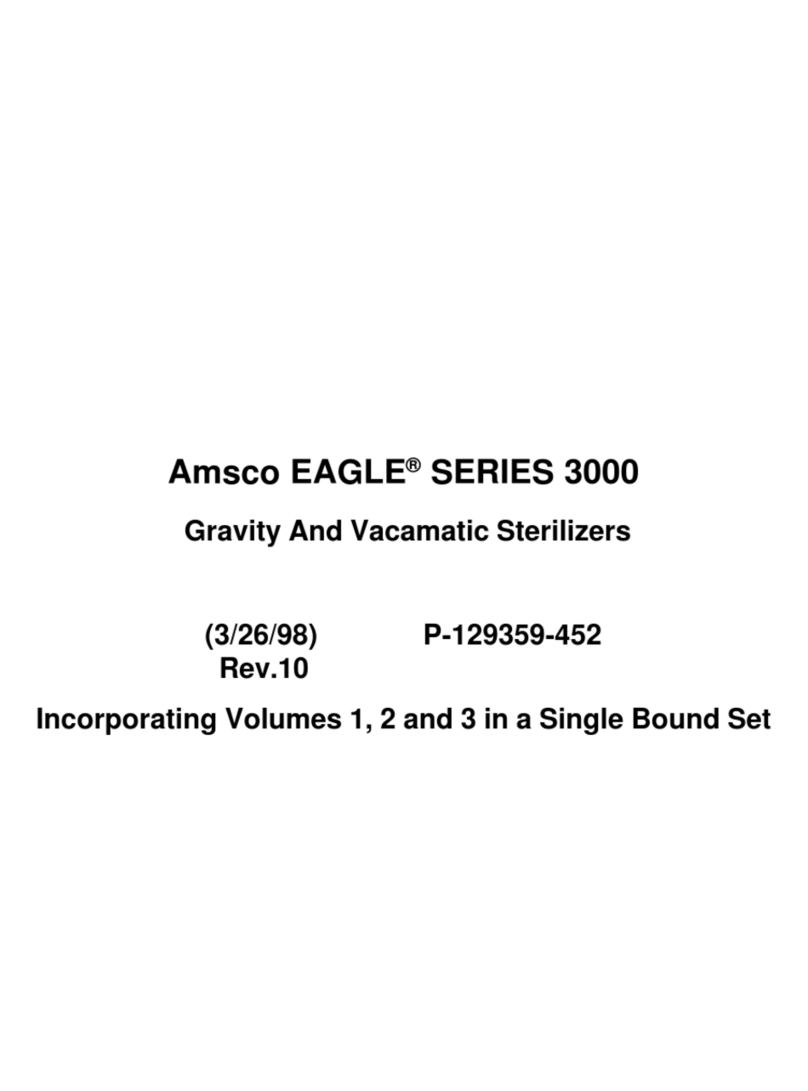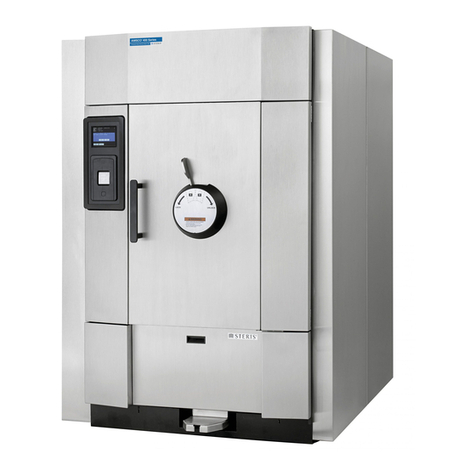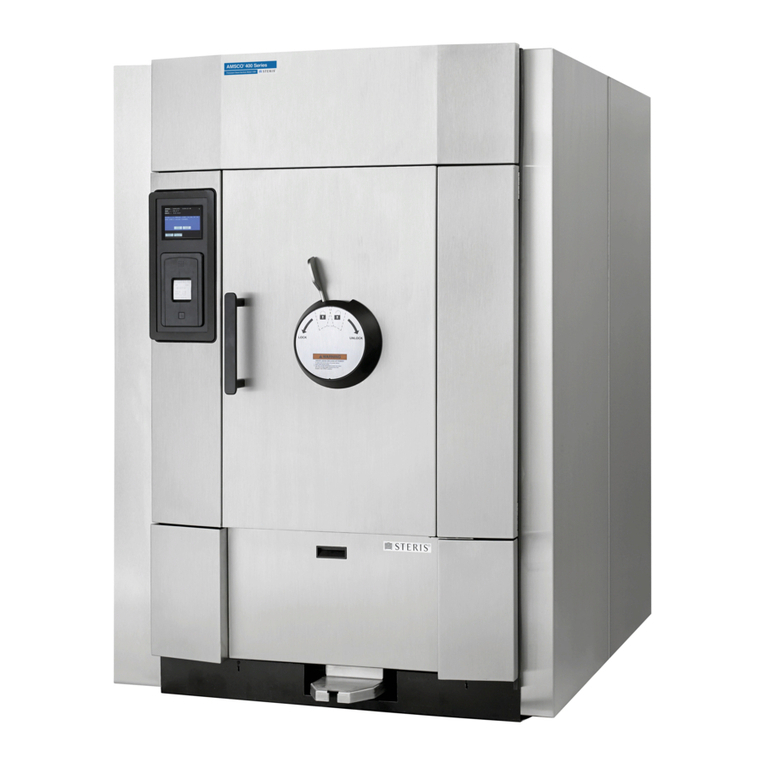
ix
Techniques of Sterilization Operator Manual P129394-176
LIST OF FIGURES
Descrption Page
Figure 4-1. Vented Closures ................................................................................................................................. 4-8
Figure 5-1. AMSCO C Series Small Steam Sterilizer Control Components.......................................................... 5-1
Figure 5-2. Basic Controls..................................................................................................................................... 5-3
Figure 5-3. Typical Out-Of-Cycle and In-Cycle Displays....................................................................................... 5-4
Figure 5-4. Alarm Display Examples ..................................................................................................................... 5-5
Figure 5-5. Control Panel ...................................................................................................................................... 5-7
Figure 5-6. Cycle Selection Touchpads ................................................................................................................ 5-8
Figure 5-7. Values Touch-Screen Pads ................................................................................................................ 5-9
Figure 5-8. Cycle Abort Touch-Screen Pad ........................................................................................................ 5-10
Figure 5-9. Typical Printout ................................................................................................................................. 5-13
Figure 5-10. Power Door Floor Pedal.................................................................................................................. 5-14
Figure 5-11. Emergency Door Opening Procedure............................................................................................. 5-15
Figure 5-12. Emergency Stop Switch, Key and Guard........................................................................................ 5-16
Figure 5-13. Press Abort Button to End Cycles When Needed........................................................................... 5-16
Figure 5-14. Emergency Stop Label.................................................................................................................... 5-17
Figure 6-1. Utility Supply Valves and Basic Sterilizer Controls ............................................................................. 6-2
Figure 6-2. Align Loading Car with Chamber Opening.......................................................................................... 6-5
Figure 6-3. Sterilizer Chamber Equipped with Rack and Shelves......................................................................... 6-7
Figure 6-4. Prevac Cycle In-Cycle Screens .......................................................................................................... 6-8
Figure 6-5. Typical Prevacuum Cycle Printouts .................................................................................................. 6-10
Figure 6-6. Gravity Cycle In-Cycle Screens ........................................................................................................ 6-12
Figure 6-7. Typical Gravity Cycle Printout........................................................................................................... 6-14
Figure 6-8. Liquid Cycle In-Cycle Screens .......................................................................................................... 6-16
Figure 6-9. Typical Printout of a Liquid Cycle...................................................................................................... 6-18
Figure 6-10. SFPP Cycle In-Cycle Screens ........................................................................................................ 6-20
Figure 6-11. Typical Printouts – 270°F SFPP and 275° SFPP Cycles................................................................6-22
Figure 6-12. Test Cycles Start-Cycle Screens .................................................................................................... 6-24
Figure 6-13. Dart (Bowie-Dick) Test Cycle Printout ............................................................................................ 6-27
Figure 6-14. Typical Printout of a Leak Test Cycle ............................................................................................. 6-29
Figure 6-15. Cycle Graph – 270°F or 275°F Prevacuum and Dart (Bowie-Dick) Cycles.................................... 6-31
Figure 6-16. Cycle Graph – Gravity Cycle........................................................................................................... 6-31
Figure 6-17. Cycle Graph – Leak Test ................................................................................................................ 6-32
Figure 6-18. Cycle Graph – Steam Flush Pressure Pulse (SFPP) Cycles.......................................................... 6-32
Figure 6-19. Cycle Graph – Liquid Cycle............................................................................................................. 6-33
Figure 7-1. Accessing Change Cycle Values, Part 1 of 3 ..................................................................................... 7-4
Figure 7-2. Change Cycle Values Procedure, Part 2 of 3 ..................................................................................... 7-5
Figure 7-3. Change Cycle Values Procedure, Part 3 of 3 ..................................................................................... 7-6
Figure 7-4. Enter or Change Custom Cycle Names.............................................................................................. 7-7
Figure 7-5. Generator Flush Duration Time Control Screen ............................................................................... 7-21





































